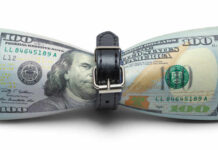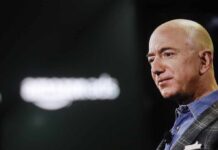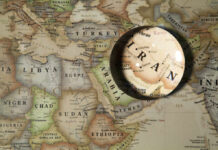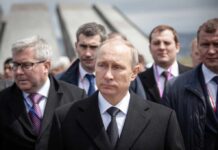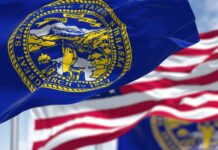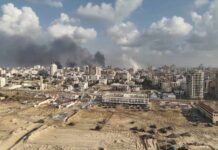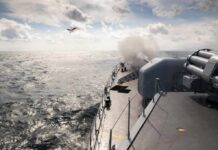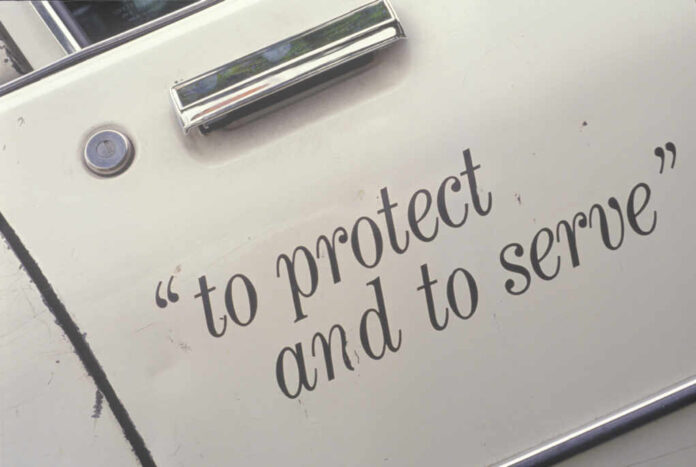
Los Angeles police clashed with protesters at a “No Kings” rally, firing tear gas and imposing a citywide curfew after some demonstrators hurled concrete and fireworks at officers.
At a Glance
- A “No Kings Day” protest in Los Angeles against President Trump’s immigration policies turned violent, prompting police intervention
- Police declared an unlawful assembly after protesters allegedly threw concrete, rocks, bottles, and “commercial-grade” fireworks at officers
- Authorities deployed tear gas, flash-bang grenades, and rubber bullets to disperse the crowd of approximately 20,000 demonstrators
- A citywide curfew was imposed at 8 p.m. to control the escalating situation
- The protest coincided with Trump’s military parade in Washington, DC, on his 79th birthday
Peaceful Demonstration Descends into Chaos
What began as a large-scale peaceful demonstration against President Trump’s immigration policies in downtown Los Angeles quickly deteriorated into violent confrontations between protesters and law enforcement. The protest, part of a nationwide “No Kings Day” event, drew over 20,000 participants and was initially characterized by Indigenous dancing, music, street vendors, and various forms of symbolic expression, including a giant balloon depicting Trump as a baby. Demonstrators carried signs with anti-Trump messages and waved American, Mexican, and Pride flags throughout the gathering.
The situation escalated dramatically outside the Edward R. Roybal Federal Building, where protesters confronted U.S. Marines and California National Guard members who had been deployed as part of President Trump’s immigration enforcement initiative. According to police reports, a “small group of agitators” began throwing concrete, rocks, bottles, and fireworks at officers, prompting authorities to declare an unlawful assembly and take more aggressive crowd control measures. Los Angeles Police Department officers in tactical gear, some on horseback, used tear gas, mace, and other less-lethal weapons to disperse the crowd.
Police Response and Protester Criticism
The LAPD’s response to the escalating situation included a citywide curfew beginning at 8 p.m. and the deployment of officers armed with riot control equipment. Police spokespersons defended their actions, stating they had shown restraint throughout most of the day before the situation deteriorated. “We have been patient all day,” said a police spokeswoman, adding, “We will make arrests” if necessary to restore order. The department has already arrested over 520 people since protests began in the city following the announcement of federal immigration sweeps.
“We just wanted to come and support our people and we’re getting tear gassed for it,” said 28-year-old Melissa Bran, who attended the protest.
Many protesters criticized the police response as excessive. Samantha Edgerton, another demonstrator, described the police action as “a total 100% over-reaction” to what had largely been a peaceful gathering. Jennifer Franks, a protester at the scene, expressed dismay at the militarized response, declaring, “This isn’t a war zone.” These criticisms highlight the tensions between maintaining public safety and respecting the right to peaceful assembly that have characterized many recent demonstrations across the country.
Broader Context of the Protests
The “No Kings Day” protests in Los Angeles were part of a nationwide movement organized by the coalition 50501 to oppose President Trump’s immigration policies, particularly the recent deployment of National Guard troops and Marines to assist with immigration enforcement operations. The demonstrations occurred on Trump’s 79th birthday, coinciding with his military parade in Washington, DC. Many protesters used imagery referencing America’s 1776 founding and carried signs with crossed-out crowns, emphasizing the message that “protest is patriotic” and portraying Trump as violating democratic norms.
Adding fuel to the protesters’ anger, armed ICE agents conducted a raid at a Santa Fe Springs swap meet earlier in the day, detaining an undisclosed number of individuals. This action, along with the visible presence of federal troops in the city despite local officials’ opposition, has heightened tensions and contributed to the charged atmosphere surrounding immigration enforcement in Los Angeles. Police Chief Jim McDonnell had prepared for large crowds, acknowledging the significant public response to federal immigration policies being implemented despite local resistance.




